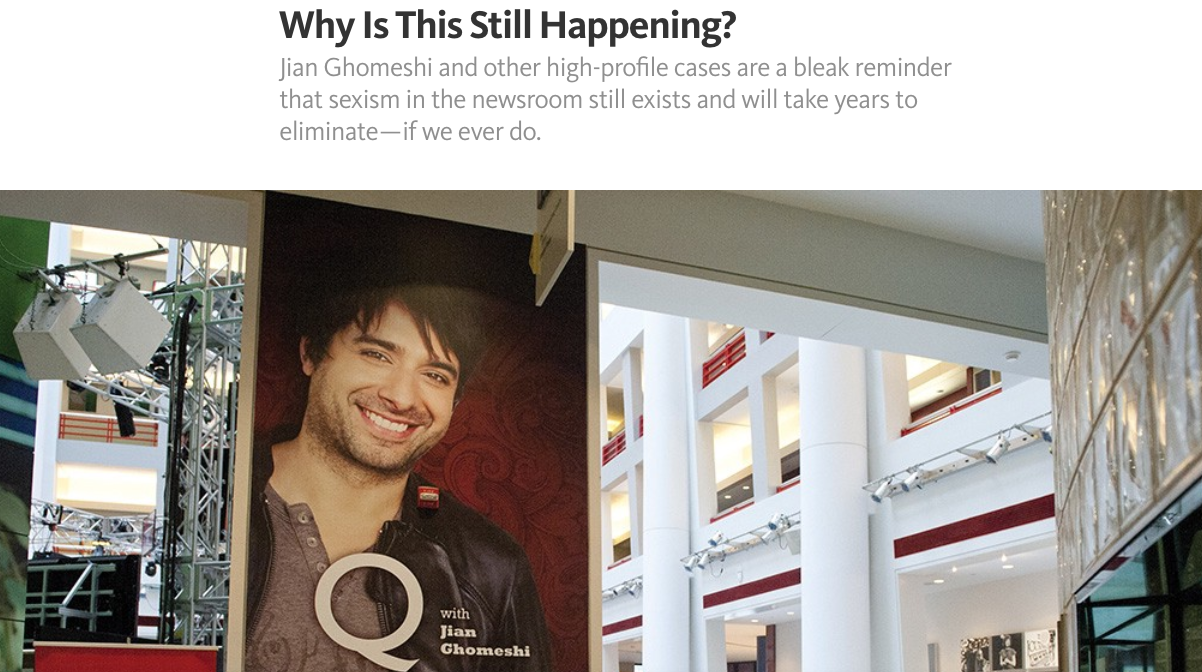What has changed for women working in Canadian journalism?
The RRJ’s Catherine Phillips examines how pervasive sexism still is at Canadian media organizations.
By Catherine Phillips
In October 2014, Canadian icon Jian Ghomeshi was hurled from behind the mic of his popular CBC radio show Q and onto the front page of newspapers across the country. The story? Allegations of sexual assault.
The news shook the nation, and within a month Ghomeshi was arrested and charged with four counts of sexual assault and one count of overcoming resistance to sexual assault by choking. What followed was over two years of revelations about the former host, victim blaming and shaming on the part of the press and the public, a trial that ended in Ghomeshi’s acquittal, and shattered trust in the Canadian judicial system in the handling of sexual violence cases.
I had no idea that I would be writing a story about sexism in the newsroom when I first read the headlines three years ago, but there is no doubt that his case has followed me and my colleagues since—inspiring a deeper look at the presence of sexism in the industry.
Unfortunately, it’s clear that there is nothing unique about Ghomeshi’s case. Take Roger Ailes, former chairman and CEO of Fox News, who was the centre of his own sexual harassment scandal last year when former anchor Gretchen Carlson filed a suit against him. And Bill O’Reilly, also of Fox News, who now faces similar allegations of sexual harassment and other inappropriate behaviour from five women, according to a recent New York Times investigation
While researching my story, I sat down with several journalists and editors to find out what being a woman in Canadian journalism is really like. It was illuminating. Each woman easily recounted times in various stages of their careers when they had been made to feel uncomfortable in the workplace. Whether it was physical sexual harassment, unwanted remarks, or being serially assigned “women’s stories,” each woman had a story to tell. I had not realized the extent of the issues in Canadian media.
When the Ghomeshi scandal broke, however, so did the barriers holding back conversations about sexism Canadian media. Women have started coming forward with their own stories of discrimination and harassment, stories that had been shared between friends and colleagues but never managed to make the front page. Initiatives aimed at supporting women have appeared in a way that was not previously available—like the Toronto-based event Broadsheet, which creates a safe community for women in media to connect, and the grassroots organizations femifesto, which works to combat rape culture and transform the nature of sexual violence coverage in Canada.
Stories of institutionalized sexism have spoken to my fears as a journalist and a woman. It is my hope that my feature “Why is This Still Happening” will help spark further discussion, and possibly help shed light on an industry that can’t afford to stay in the dark any longer.
Read Phillips story on the Ryerson Review of Journalism website.

